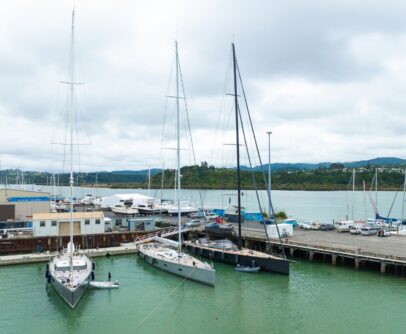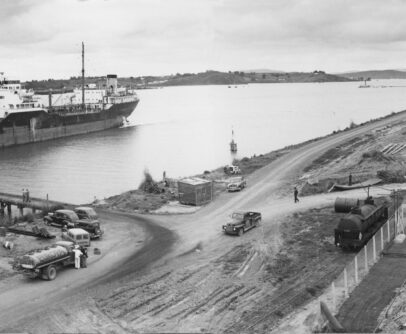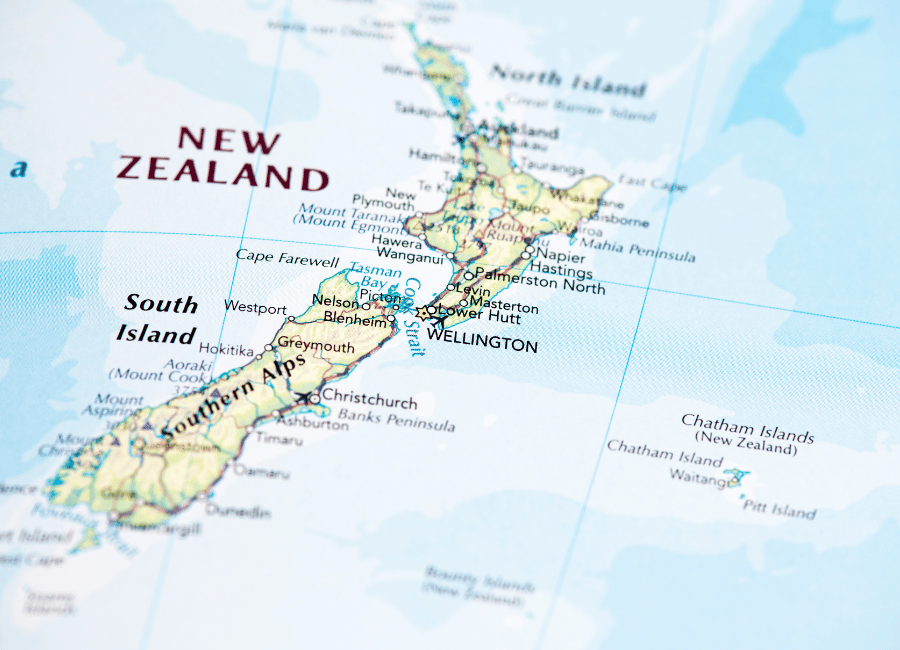September 3, 2025
Five Tips for Navigating Marinas in New Zealand
Navigating marinas across New Zealand’s coastline needs careful planning. From the subtropical Bay of Islands to southern harbours, each marina presents unique challenges.
Here are our five top tips:
- Pre-arrival planning
- Tidal and weather considerations
- Understanding navigation aids
- Marina navigation rules
- Docking best practices
Pre-arrival planning
Navigating New Zealand marinas requires awareness of local conditions, channel markers, and boating rules. Prioritise safety by checking weather forecasts, having a float plan, and understanding give-way rules.
Before you leave:
- Always review marine forecasts and tidal information
- Review marina layouts, hazards, and use updated charts
- Inform someone of your route, expected return time, and vessel details
- Ensure all safety equipment is operational, including life jackets, flares, and communication devices
- Take boating courses to enhance skills, especially for newcomers
Research your destination and contact marinas directly during peak summer months when berths are in high demand.
Tidal and weather considerations
New Zealand’s significant tidal ranges, particularly on the west coast and northern harbours, require careful planning. Always check tide tables and plan arrivals during rising or high tide when possible.
Summer brings crowded marinas that can complicate docking. Book berths in advance and arrive early when conditions are typically calmer. Winter navigation requires extra attention to weather forecasts and sea state predictions when navigating marinas in New Zealand.
Understanding navigation aids
Establish contact on Channel 16 before switching to working channels. Clearly state vessel details and arrival times. Use radio communication when approaching or manoeuvring near other vessels.
While modern chartplotters and AIS systems enhance navigation, maintain traditional seamanship skills. Carry emergency contacts for your destination marina and local maritime rescue services.
Mobile applications can provide real-time marina information and berth booking capabilities, but electronic systems shouldn’t replace proper preparation.
Marina navigation rules
In the marina:
- Give way to vessels already underway in main channels
- Stay on the starboard (right) side of channels
- Maintain slow speeds to minimise wake in marina areas
- Watch for other vessels, fixed structures, and hazards
- Maintain safe distances and follow marina etiquette
- Use appropriate fenders and dock lines to properly secure your vessel
- Commercial vessels always have the right of way in New Zealand harbours. When boating in Whangārei, stay clear of shipping lanes.
Docking best practices
Prepare all equipment before approach: position fenders, ready dock lines, and brief your crew. Most New Zealand marinas provide docking assistance, so don’t hesitate to accept help from experienced marina staff who understand local conditions.
Always have a backup plan if your intended berth is unavailable or conditions make docking unsafe.
Planning your next marina visit? Contact Port Nikau for expert advice on navigating Whangārei Harbour and accessing our deep water facilities in the heart of Northland’s marine precinct.
Recent News

Port Nikau Hosts Three Southern Wind Yachts
Port Nikau hosts three Southern Wind yachts, showcasing Whangārei’s exceptional marine services and welcoming atmosphere for crews.

The History of Port Whangārei
Port Whangārei has played a key role in the economic growth of Whangārei and the wider Northland region. Situated at the heart of Whangārei Harbour, it was once a bustling industrial and marine hub, servicing Whangārei township through significant periods of growth. Today, its legacy is evolving as Port Nikau takes shape, transforming the area

